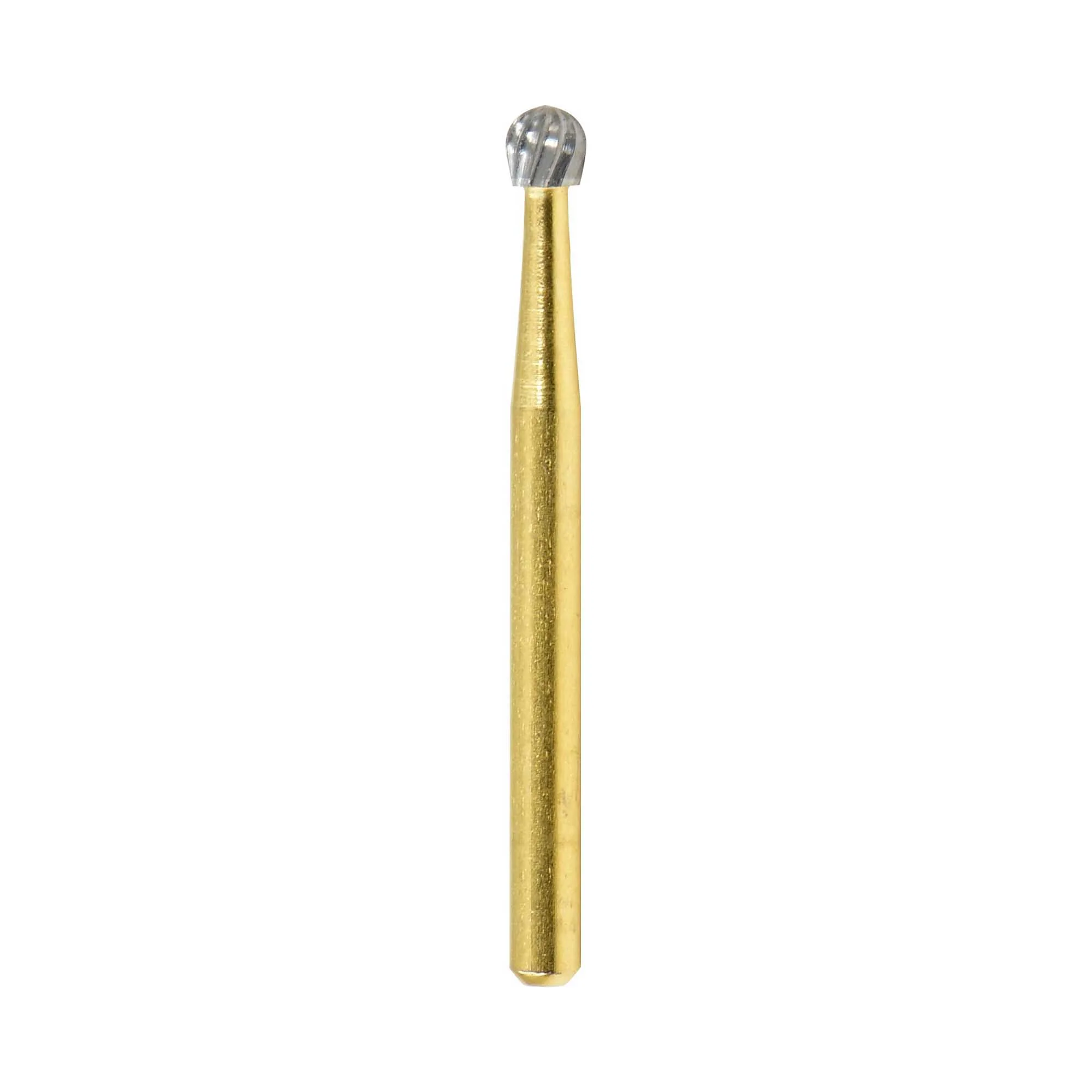Introduction to carbide burs
Carbide burs are essential tools in the fields of dentistry, orthodontics, and various surgical disciplines. They are small, precision-engineered rotary cutting tools made from tungsten carbide, a material known for its durability and hardness. These instruments are designed to drill, cut, shape, and finish hard materials like metal, bone, and dental enamel, making them indispensable in modern medical and industrial practices. This article delves into the characteristics, types, uses, and benefits of carbide burs, providing a comprehensive overview of their significance and applications in different fields. Additionally, it explores the roles of wholesale carbide bur suppliers, manufacturers, and factories in the industry.
Types of Carbide Burs
Carbide burs come in a variety of types, each suited for specific tasks and applications. The primary differentiation lies in the shank and head of the burs. The shank, usually cylindrical, fits into the handpiece of the rotary tool, providing the necessary grip and control for precision work. The head, which does the actual cutting, comes in various shapes and sizes, allowing for a wide range of applications. Common head shapes include round, flame, cylindrical, taper, and inverted cone, each designed for specific cutting actions. The diversity in shapes and sizes enables carbide burs to perform a multitude of functions, from delicate dental procedures to robust industrial applications.
● Shank Types and Head Variations
The shank of a carbide bur can be either friction-grip or latch-type, each suited for different types of handpieces. Friction-grip shanks are commonly used in high-speed handpieces, providing smooth rotation for precise cutting. Latch-type shanks, on the other hand, offer a more secure fit, making them ideal for low-speed handpieces used in procedures requiring more torque. The head, made of tungsten carbide, is crafted with precision to ensure consistent performance and durability. Depending on the application, the head can be designed with cross-cut, straight-cut, or diamond-cut patterns, each offering unique cutting properties.
Carbide Burs in Dentistry
Dentistry is one of the primary fields where carbide burs play a crucial role. These tools are indispensable for a variety of dental procedures, including cavity preparation, excavation, and restoration. When a dentist prepares a cavity for filling, carbide burs are used to remove decay and shape the cavity, ensuring optimal adhesion of the filling material. The precision and efficiency of carbide burs make them ideal for these tasks, allowing dentists to perform procedures quickly and accurately.
● Cavity Preparation and Excavation
Carbide burs excel in cavity preparation and excavation due to their ability to cut through hard enamel and dentin with minimal pressure. This precision reduces the risk of damaging surrounding tissues and ensures a clean, smooth surface for filling. The sharp cutting edge of the carbide bur minimizes vibration, enhancing patient comfort during the procedure. Additionally, the durability of carbide ensures that the bur maintains its sharpness over multiple uses, reducing the need for frequent replacements.
● Finishing Cavity Walls and Surfaces
Once the cavity is prepared and filled, carbide burs are used to finish the cavity walls and restoration surfaces. This process involves smoothing and polishing the filling material to match the natural contours of the tooth, ensuring proper bite alignment and aesthetics. The fine cutting edges of carbide burs allow for precise shaping and smoothing, resulting in a seamless integration of the filling with the natural tooth structure.
Applications in Orthodontics
In orthodontics, carbide burs are essential for tasks such as drilling old fillings and finishing crown preparations. The ability of carbide burs to cut through metal and ceramic materials makes them ideal for these procedures. When replacing or modifying metal appliances like braces and retainers, carbide burs provide the necessary precision and control to achieve the desired outcome without compromising the integrity of the appliance.
● Drilling Old Fillings
Carbide burs are particularly useful for drilling old or worn-out fillings. The sharp, durable cutting edge of the bur allows for efficient removal of the old material, paving the way for a new restoration. This process requires a high level of precision to avoid damaging the surrounding tooth structure, making the reliability of carbide burs essential.
● Finishing Crown Preparations
Carbide burs are also instrumental in finishing crown preparations. After a tooth is shaped for a crown, carbide burs are used to refine the margins and contours, ensuring an accurate fit of the crown. The precision and control offered by carbide burs make them ideal for this delicate task, where even minor discrepancies can affect the fit and function of the crown.
Surgical and Bone Contouring Uses
In surgical applications, carbide burs are used for contouring bone and removing impacted teeth. These procedures require the ability to cut through dense, hard tissue, making the toughness of carbide burs invaluable. Surgeons rely on the durability and cutting precision of carbide burs to perform procedures with minimal trauma to surrounding tissues, enhancing patient recovery.
● Contouring Bone
Bone contouring involves reshaping bone structures to achieve desired anatomical results. In maxillofacial surgery, orthopedic procedures, and neurosurgery, carbide burs are used to sculpt bone with precision and control. The ability to cut through hard bone tissue while maintaining accuracy is crucial for successful surgical outcomes, making carbide burs an essential tool in these fields.
● Removing Impacted Teeth
The removal of impacted teeth, such as wisdom teeth, often requires the use of carbide burs. These tools provide the necessary cutting power and precision to section and remove teeth without excessive force. The reduced vibration and precise cutting action of carbide burs minimize trauma to surrounding tissues, leading to faster recovery times for patients.
Carbide Burs in Prosthodontics
Prosthodontics involves the restoration and replacement of teeth, where carbide burs are used for separating crowns and bridges, as well as other precision tasks. The strength and sharpness of carbide burs make them ideal for these applications, where accuracy and efficiency are paramount.
● Separating Crowns and Bridges
Carbide burs are commonly used to separate crowns and bridges during dental restoration procedures. Their ability to cut through metal and ceramic materials with minimal pressure ensures a clean separation, reducing the risk of damage to the underlying tooth structure. This precision is crucial in preserving the integrity of the remaining teeth and ensuring a successful restoration.
● Precision in Dental Restoration
In dental restoration, precision is key to achieving aesthetically pleasing and functional outcomes. Carbide burs provide the accuracy needed to shape and polish restorations, ensuring a seamless integration with the patient's natural dentition. The consistent performance of carbide burs in these tasks makes them a favorite among prosthodontists.
Benefits of Using Carbide Burs
The widespread use of carbide burs in various fields can be attributed to their numerous benefits. Durability, efficiency, and precision are among the most significant advantages of using carbide burs, making them a preferred choice for professionals.
● Durability and Efficiency
Carbide burs are known for their exceptional durability, thanks to the toughness of tungsten carbide. This material retains its sharpness and cutting efficiency over extended use, reducing the need for frequent replacements. The long lifespan of carbide burs translates to cost savings for professionals, making them a cost-effective choice.
● Precision Cutting and Versatility
The precision cutting ability of carbide burs is unmatched, allowing for smooth, accurate cuts in a variety of materials. This versatility makes carbide burs suitable for a wide range of applications, from delicate dental procedures to robust industrial tasks. The ability to perform multiple functions with a single tool enhances efficiency and reduces the need for specialized equipment.
Comparing Carbide and Diamond Burs
While carbide burs are widely used, diamond burs are another option for cutting and shaping hard materials. Understanding the differences between these two types of burs can help professionals choose the right tool for their needs.
● Differences in Material and Use
Carbide burs are made from tungsten carbide, while diamond burs feature a coating of diamond particles. This fundamental difference in materials gives each type of bur its unique properties. Carbide burs are known for their strength and durability, making them suitable for cutting through metal and hard tissue. Diamond burs, on the other hand, offer superior abrasion resistance and are ideal for polishing and finishing tasks.
● Advantages and Disadvantages
Each type of bur has its advantages and disadvantages. Carbide burs excel in cutting efficiency and durability, making them a preferred choice for tasks that require precision and longevity. However, they can be more expensive than diamond burs. Diamond burs, while less durable, provide a smoother finish and are better suited for polishing tasks. The choice between carbide and diamond burs depends on the specific requirements of the task at hand.
Maintenance and Care of Carbide Burs
Proper maintenance and care of carbide burs are essential to ensure their longevity and performance. Following the right cleaning and storage techniques can extend the life of these valuable tools.
● Proper Cleaning Techniques
Regular cleaning of carbide burs is crucial to prevent debris buildup and maintain cutting efficiency. After each use, burs should be thoroughly cleaned with appropriate solvents to remove any remaining material. Ultrasonic cleaners can be used for a more thorough cleaning, ensuring that all debris is removed from the cutting edges.
● Storage Tips for Longevity
Proper storage of carbide burs is essential to prevent damage and maintain their sharpness. Burs should be stored in a clean, dry environment, away from moisture and contaminants. Specialized bur blocks or holders can be used to organize burs and protect them from damage during storage and transportation.
Future Trends in Carbide Bur Technology
As technology advances, so too does the field of carbide bur manufacturing. Innovations and advancements in carbide bur technology promise to enhance their performance and expand their applications in various fields.
● Innovations and Advancements
Recent developments in carbide bur technology focus on improving cutting efficiency, reducing wear, and enhancing durability. Advances in manufacturing techniques, such as 5-axis CNC precision grinding, allow for the production of burs with intricate designs and optimized cutting patterns. These innovations aim to meet the evolving needs of professionals and improve the overall performance of carbide burs.
● Evolving Techniques and Applications
The future of carbide burs lies in their adaptability and versatility. As new techniques and applications emerge, carbide burs will continue to evolve, offering improved solutions for a wide range of tasks. The integration of cutting-edge technology in bur manufacturing is set to enhance their precision and efficiency, solidifying their role as indispensable tools in both medical and industrial fields.
Conclusion
Carbide burs are vital tools across various professional fields, offering unmatched precision, durability, and versatility. From dentistry and orthodontics to surgery and industrial applications, their significance cannot be overstated. Understanding the different types, uses, and benefits of carbide burs can help professionals make informed decisions and optimize their work processes.
Introduction to Boyue
Jiaxing Boyue Medical Equipment Co., Ltd, a leading manufacturer, specializes in medical rotary cutting tools using advanced 5-axis CNC precision grinding technology. Boyue's product range includes dental burs, files, bone drills, and tools for orthopedic and neurosurgery operations. Known for their skilled workforce, strict quality control, and competitive pricing, Boyue stands out in the global market, offering a variety of carbide burs and dental files for surgical and laboratory use, remaining a trusted name for over 23 years in the industry.

Post time: 2025-04-09 16:54:02


